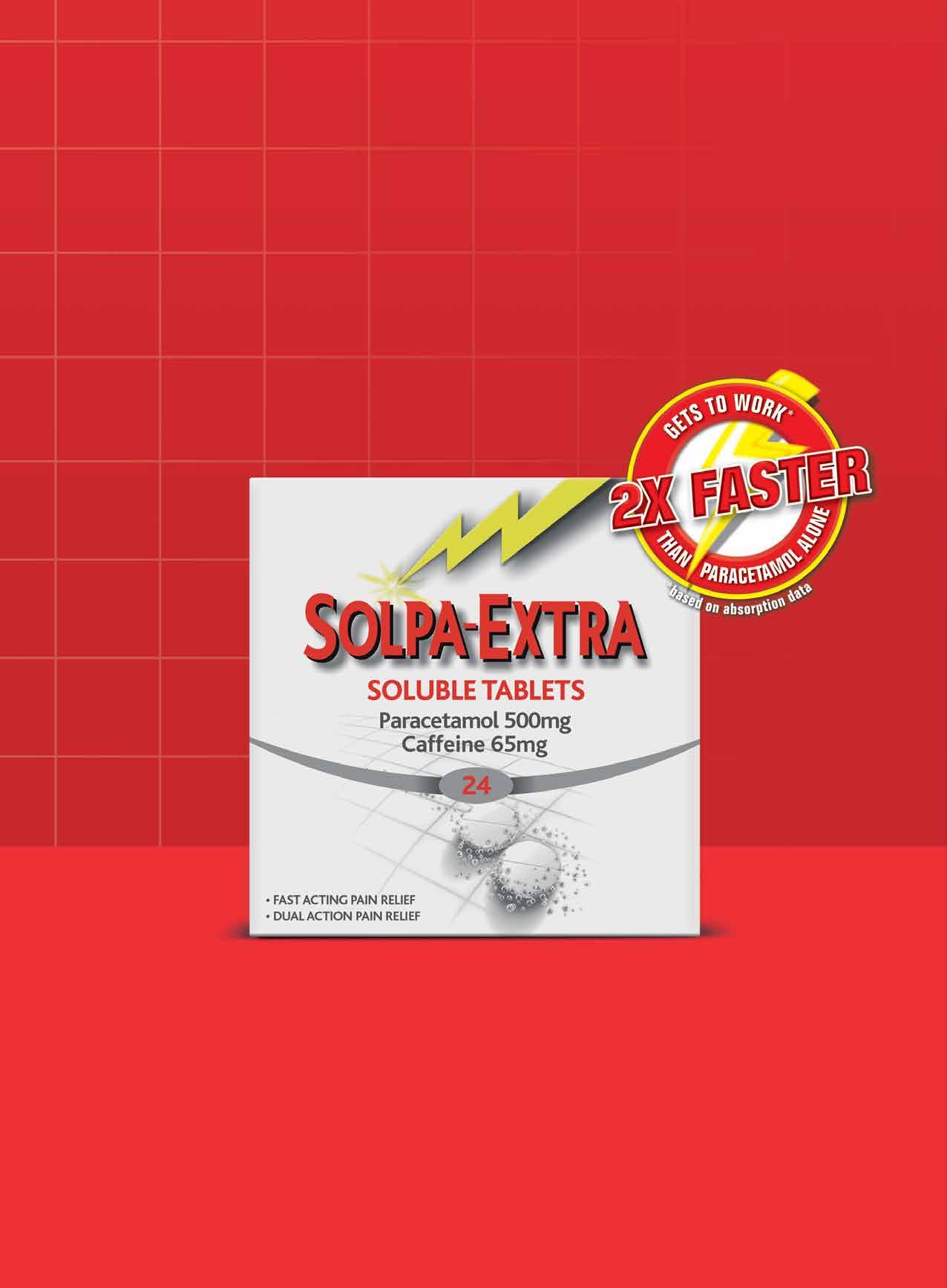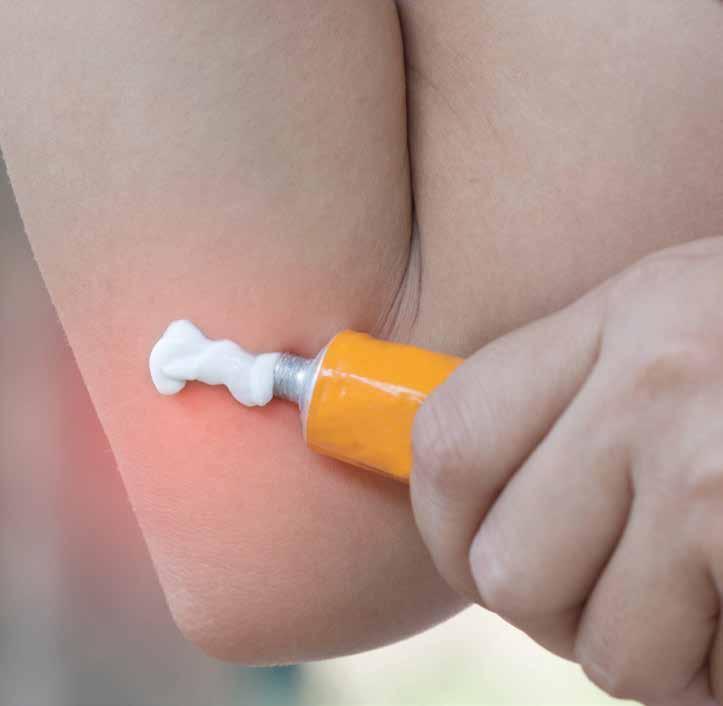
5 minute read
Osteoarthritis
Osteoarthritis is caused by wear and tear of cartilage in the joints. It is the most common form of arthritis in Ireland. In osteoarthritis, the surface of a joint becomes damaged and the surrounding bone grows thicker. Osteoarthritis occurs when there is damage in and around the joints that the body cannot fully repair. It’s not clear exactly why this happens in some people, although the chances of developing the condition can be influenced by a number of factors, such as age and weight. There are many different types of osteoarthritis, which can affect a number of the body’s joints. The knees are the most common sites for osteoarthritis. The hips, hands, spine and big toes are also often affected.
The pain and stiffness in the joints can make carrying out everyday activities difficult for some people with the condition. The condition affects 400,000 people in Ireland. There has been an increase in the number of people with osteoarthritis in Ireland for two reasons; our ageing population and more obese people putting an increased strain on their joints. Osteoarthritis is more common and often more severe in women, especially in the knees and hands. It often starts after the menopause. Osteoarthritis usually develops in people over 45 years of age, although younger people can also be affected. It is commonly thought that osteoarthritis is an inevitable part of getting older, but this is not quite true. People may in fact be able to reduce their chances of developing the condition by doing regular, gentle exercises and maintaining a healthy weight.
SYMPTOMS
Stiff and painful joints are the main symptoms. Symptoms vary from one person to the next. The level of physical activity can make a difference. The weather (especially damp and low pressure) may affect symptoms. Pain tends to be worse on exercising the joint and at the end of the day. The joints do not move as freely as normal and may cause a ‘cracking’ sound when moved. In osteoarthritis of the knee, pain is felt at the front and sides of the knee, and in severe causes it causes the legs to become bent (bow-legged). With hip joints, the pain is usually in the front of the groin, but can radiate around the side and front of the thigh, the buttock and even down to the knee. Sometimes when osteoarthritis is severe, the affected leg may shorten. With knee and hip osteoarthritis, daily tasks such as going up or down stairs can become difficult to perform. Mobility can be affected due to pain and walking. A complication of osteoarthritis, especially knee osteoarthritis, is calcification, which is when chalky deposits of calcium crystals form in the cartilage of joints. This process tends to make the osteoarthritis more severe and painful. Most people with osteoarthritis can carry on with a normal life. Symptoms can peak for a few years, and then subside. For others, one or more joints may worsen, causing pain and disability. Unfortunately, it is difficult to predict the outcome for a person affected with the condition.
TREATMENTS
There’s no cure for osteoarthritis, but the condition doesn’t necessarily get any worse over time and a number of OTC treatments are available to help relieve the symptoms. One of the main treatments for osteoarthritis is changes to lifestyle – such as maintaining a healthy weight and exercising regularly. Topical gel - pharmacists will be able to advise on the use of topically applied gel to ease joint pain associated with osteoarthritis. Gels work by delivering lubricating ingredients directly into joints that have become damaged due to osteoarthritis. By improving lubrication within the joints they can relieve pain and reduce joint stiffness. They can be used safely with other medicines.
Painkillers - the type of painkiller (analgesic) you may recommend will depend on the severity of the pain and other conditions or health problems the patient has. Paracetamol is often used in the first instance and sufferers can be advised to take it regularly rather than waiting until the pain becomes unbearable. Opioids, such as codeine, are another type of painkiller that may ease pain if paracetamol does not work. Opioids can help relieve severe pain, but can also cause side effects such as drowsiness, nausea and constipation. In some circumstances a non-steroidal antiinflammatory drug (NSAID) may be prescribed as a painkiller by a GP. NSAIDs are painkillers that work by reducing inflammation. Some NSAIDs are available as creams (topical NSAIDs) that you apply directly to the affected joints. Some topical NSAIDs are available without a prescription. Capsaicin cream - a GP may prescribe capsaicin cream if a patient has osteoarthritis in the hands or knees and topical NSAIDs haven’t been effective in easing the pain. Capsaicin cream works by blocking the nerves that send pain messages in the treated area. The patient may have to use it for a while before it has an effect.
Steroid injections - steroids are a type of medication that contain man made versions of the hormone cortisol, and are sometimes used to treat particularly painful musculoskeletal problems. Some people with osteoarthritis may be offered steroid injections when other treatments haven’t worked.
W W
H A M
Who? Osteoarthritis usually develops over the age of 45. It is more common and severe in women than men.
What are the symptoms? Pain and stiffness in the joints, joint tenderness, increased pain and stiffness when a person has not moved their joints for a while, joints appearing slightly larger or more ‘knobbly’ than usual, a grating or crackling sound or sensation in the joints, limited range of movement in the joints.
How long have they had the symptoms? Medical help should be sought if a patient has persistent symptoms.
Action already taken? Lifestyle changes, such as exercise and losing weight, can help to relieve symptoms.
DON’T LET PAIN HOLD YOU BACK

ESSENTIAL INFORMATION
Solpa-Extra 500mg/65mg Soluble Tablets contain paracetamol and caffeine. For the treatment of mild to moderate pain. Adults and children over 16 years: 1-2 tablets dissolved in water every 4-6 hours. Max 8 tablets a day. Children 12-15 years: 1 tablet disolved in water every 4-6 hours. Max 4 tablets a day. Not suitable for children under 12 years. Contraindications: Hypersensitivity to the ingredients. Precautions: Particular caution needed under certain circumstances, such as renal or hepatic impairment, chronic alcoholism and malnutrition or dehydration. Precautions needed in asthmatic patients sensitive to acetylsalicylic acid, patients on a controlled sodium diet and with rare hereditary problems of fructose intolerance. Patients should be advised not to take other paracetamol containing products concurrently. Pregnancy and lactation: Not recommended during pregnancy and breastfeeding. Side effects: Rare: allergies. Very rare: thrombocytopenia, anaphylaxis, bronchospasm, hepatic dysfunction, cutaneous hypersentitivity reactions. Unknown: nervousness, dizziness. Further information is available in the SmPC. PA 1186/017/001. P. MAH: Chefaro Ireland DAC, The Sharp Building, Hogan Place, Dublin 2, Ireland. Date of preparation: July 2020. Not subject to medical prescription.










